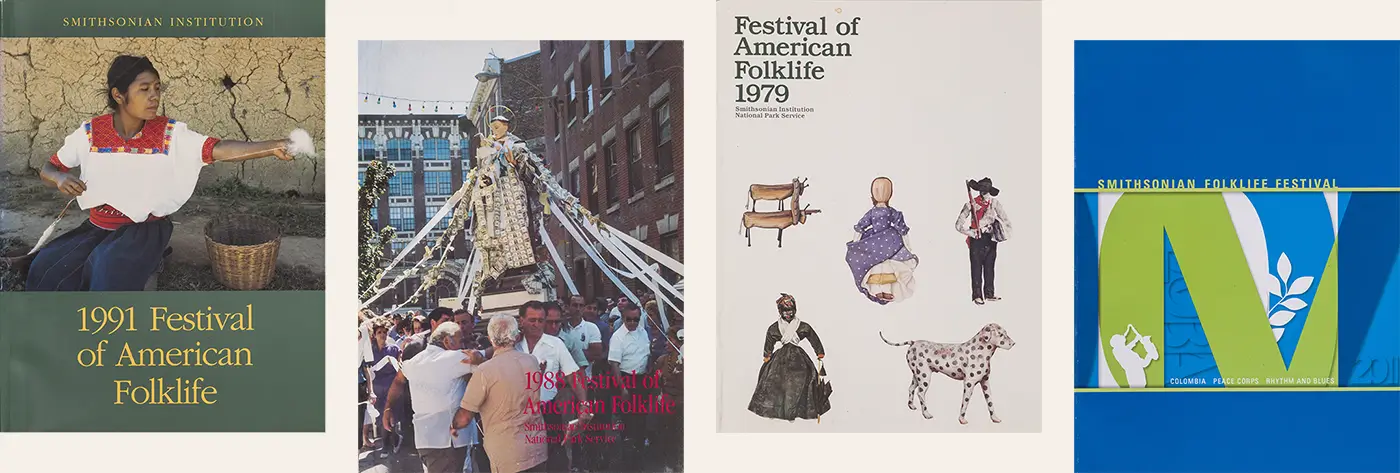Program Books
Festival program books have become treasured mementos
From 1968 to 2013, visitors to the Folklife Festival could pick up a program book and not only find a map of the site and a schedule of events, but could go home afterward and read about the underpinnings and intent of what they had just experienced. Published in advance of each Festival, the books have come to be seen as insightful companions to the annual “cultural conversation” taking place on the National Mall. In 1990, Richard Kurin, then director of the Center for Folklife and Cultural Heritage, reflected on this living archival artifact:
“(In the early years) the Festival program book included many documentary photographs, recipes, statements by and interviews with craftspeople and musicians. It attempted to bring the many voices of the Festival event to its printed publication. Over the years, the program book has included seminal and informative articles on tradition and issues presented by Festival programs.”
While each program book is distinct, the prefaces and introductions frame the thematic threads of the upcoming year. Many of the themes have persisted, even if the terminology has changed. “Cultural conservation” is later taken over by “cultural resistance” or “cultural sustainability.” The early terminology of voice and validation solidifies into “cultural democracy.” As we journey through these introductory essays, we discover the evolving thematic structure of the Festival and its possibilities for contributing to a better world. The Festival remains faithful to its principles of respect and plurality but has developed a vocabulary to engage governments and world agencies to fight for these principles.
Each program book is also a piece of art. The front covers that feature an artist at work speak volumes about the traditional knowledge informing their skills. When Miss Felicia Caines, a basket maker from the U.S. Virgin Islands was featured on the 1990 cover, a legislator from the islands observed that the Smithsonian had replaced the touristic “sun, sea, and sand” image with that of a local traditional artist—a much truer reflection of the place.



